Wendy Roberts
This paper describes some of the sports that were active in Trumpington in the 1920s. It was presented at the Local History Group meeting on 12 March 2020.
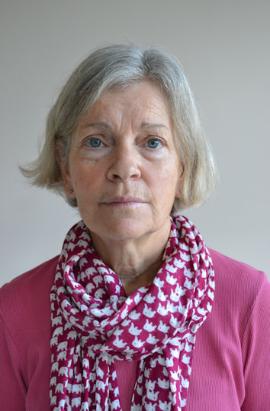
In 1919, one of the suggestions for the Trumpington war memorial was “a memorial be placed in a garden with tennis courts and other space for the furtherance of sport”, showing a local interest in tennis and other sports.
In the 1920’s parish magazines, there are entries for the Trumpington Tennis Club in the booking calendars of the Village Hall, such as this example from 1925.
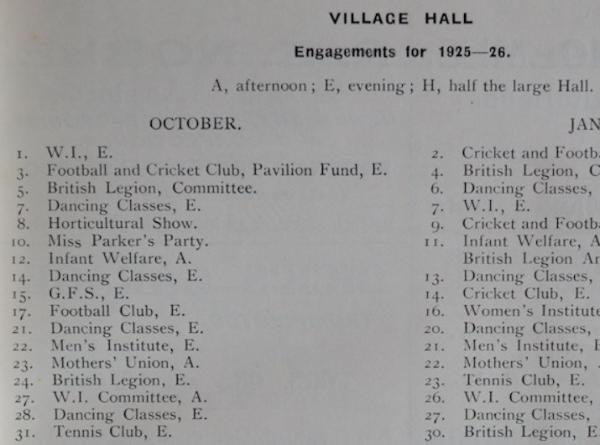
Miss A. Pooley, a Cambridgeshire county champion in the 1920s who lived in Grantchester, played tennis in Trumpington. There is a photograph of Miss Pooley in her tennis outfit, in Trumpington Past & Present . It is a mystery where club members played but there is a reference to the Club’s court being relaid in the 1930s.
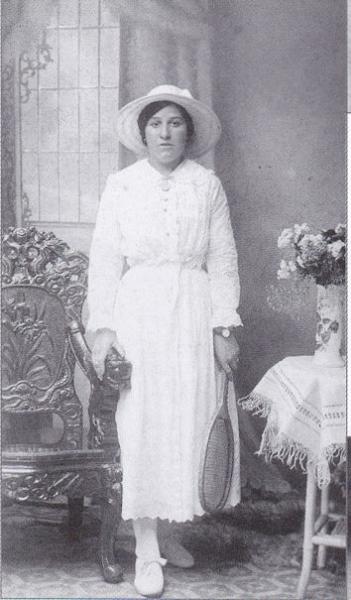
Trumpington Bowls Club has photographs dating from 1913 to 1920 showing bowls games played at various locations, including at the Green Man public house. In about 1920, the Bowls Club moved to Church Lane and played on a green adjacent to the Unicorn public house (now the Lord Byron). The Club remained there for about 30 years until 1953, when it moved to the current site on the King George V playing field.
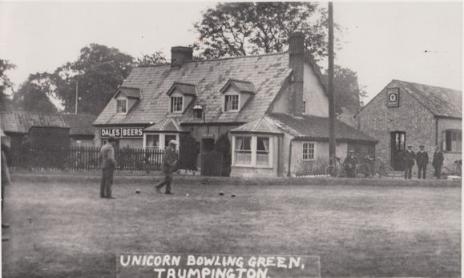
Trumpington Bowls Club playing on the Bowling Green to the right of The Unicorn Inn, 1920s. Cambridgeshire Collection, Cambridge Central Library, reference: Y.Tru.K2 29478.
My interest in the history of local sports clubs grew while we were researching the lives of First World War Trumpington people. Accounts of some of the men killed in action, such as Robert Wilson and Sidney Peters, had referred to their sporting skills in cricket and football. These sports were played, before and after the war, on Trumpington Recreation Ground, which was on the east of the High Street, opposite the current Shell garage.
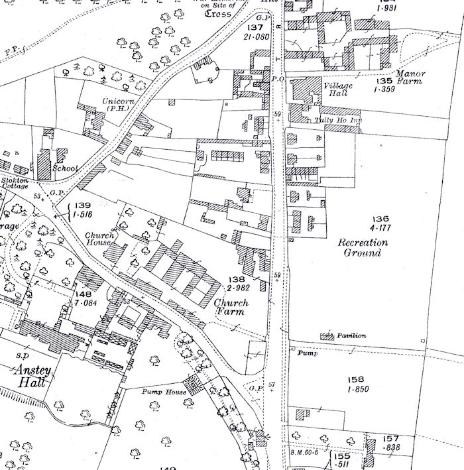
Recreation Ground to the east of the High Street. Ordnance Survey map, 1925.
In the 1920s, the carpenter and wheelwright shop of Mr Edwin Smith and his sons, Gordon and Clifford, was on the west side of the High Street, the site now occupied by the garage. The Smith brothers were outstanding cricketers and it was said that, at village matches, Cliff was expected to hit at least one ball across the road onto the roof of the wheelwright’s premises.
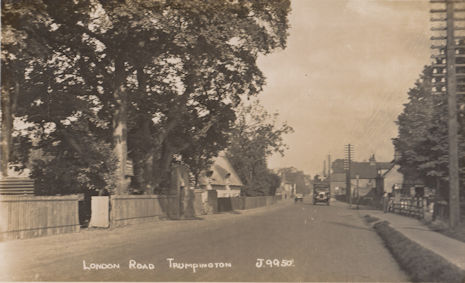
Trumpington High Street (London Road), early 1920s. Looking north along the High Street, with the gate into the wood yard (sign visible on the tree). The recreation ground is to the right. Cambridgeshire Collection, Cambridge Central Library reference: Y.Tru.K2 24687.
The earliest account I have found of a Trumpington cricket match was dated 1874, see the history of local cricket .
The 1920s was a particularly successful period for the local cricket club. In 1920 the Trumpington Cricket Club entered several competitions. They reached the semi-finals of the Cambridgeshire Junior Cup and they played their way through Division 1 of the Milton and District League to become the Champions. In 1921, Trumpington defeated Bottisham to win the Milton and District Challenge Cup but, unlike in the previous year, Trumpington was defeated in the final of the Milton and District Division I League. They lost by seven runs to Willingham but fortunately the newspaper published photos of both the winning and losing teams. Introducing the members of the team: we can see the Smith brothers and a couple of Haggis brothers.
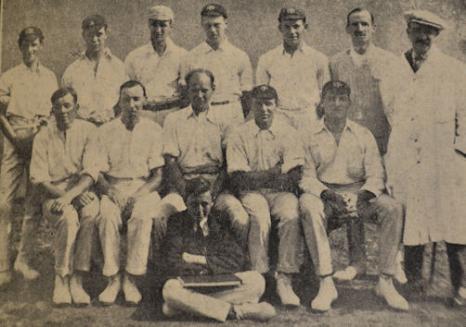
‘Trumpington Defeated By Seven Runs!’, Cambridge Chronicle , 21 September 1921, p. 7. Cambridgeshire Collection.
Left to right: Standing: Gordon Smith, Lloyd, E. Benton, J. Haggis, Cliff Smith, Mayle, Joseph Kefford (1913 league matches googly bowler and praised for his brilliant batting – partial amputation of right leg in 1917 – Corporal in Queen’s Rgt.). Seated: Robert Rayner, A.H. Porter, P. Utteridge (captain), H. Hicks, A. Haggis and (on the ground) R. Edwards (scorer).
The next year, 1922, Trumpington played in three key competitions. They reached the final of the Milton and District Challenge Cup again and the team was described as “on top all the way through the match against Lode”. There is a photograph of Trumpington playing Great Shelford during the semi-final of the Grantchester and District League knock-out competition for the Duke’s Cup. I had hoped that they might have been playing at home and so this would have been a picture of our recreation ground, but discovered from the newspaper match report that they were playing at Little Shelford. (This now known as the Wale Recreation Ground.) Trumpington defeated Great Shelford by four wickets. In the Duke Cup final, Trumpington defeated Newton. It was reported “The bowling of the brothers Smith was the decisive factor.”
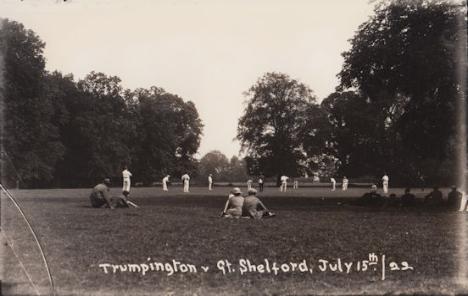
Trumpington v. Great Shelford cricket match, 15 July 1922. Ted Mott Collection photograph of the Duke Cup semi-final match between Trumpington and Great Shelford, played at Little Shelford (Grantchester League). Cambridgeshire Collection, Cambridge Central Library, reference: Y.Tru.K22 29354.
The third key event in 1922 was when Trumpington met Newton in the final of the Grantchester and District League. Having beaten Newton in the knock-out competition, there had been a hope/expectation that they would win again. In the match report, it was noted that the fine all- round display throughout the season made Trumpington one of the most formidable of the local elevens. But on this occasion Newton were the winners. The ‘Smith’ brothers feature once again.
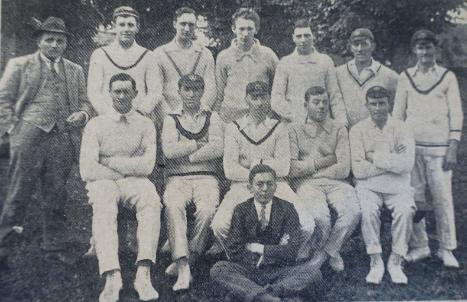
‘League honours for Newton cricketers’, Cambridge Chronicle, 4 October 1922, p. 7. Cambridgeshire Collection.
Standing: A.F. Edwards (Hon. Treasurer), C. Smith, E. Benton, E. Peters, S. Harvey, R. Cousins, and G. Smith. Seated: S. Mayle, H. Stearn, A. H. Porter (captain), R. Rayner, and H. Hicks. Seated in front is the son of the Club’s Hon. Treasurer, R. Edwards, who acted as scorer.
1926 was a bumper year for Trumpington cricket players. The club had again entered three competitions. They reached the final of the Grantchester & District Challenge Cup but were beaten by Coton. For the first time in the history of the club, they were the proud winners of both the Cambs. Junior League (defeating the Y.M.C.A. by six wickets) and Cambs. Junior Cup (in the latter game they beat Great Wilbraham by 135 runs). We have a team photograph.
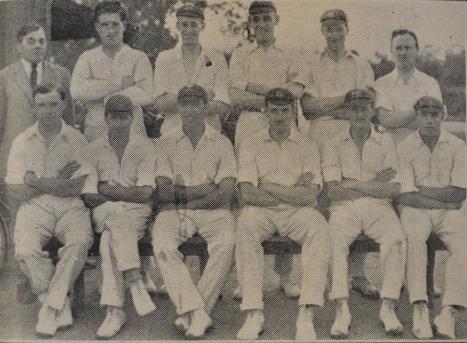
‘Trumpington’s Triumph’, Cambridge Chronicle, 1 September 1926, p. 7. Cambridgeshire Collection.
Standing: R. Rayner, L. Unwin, Alfred Haggis, L.R. Truelove, Albert Haggis, J.J. Wilson.
Seated: F.W. Osborne, A.J. Wilson, R. Cousins, Arthur Haggis, Gordon Smith, H. Plummer.
Also in 1926, there was a fourth key cricket competition. It was between County branches of the British Legion, playing for the Lord Lieutenant’s Cup. Six members of the above winning team plus 5 other Trumpington British Legion men reached the final, which was played at Fenners and the Trumpington team defeated Bottisham. Gordon Smith was captain.
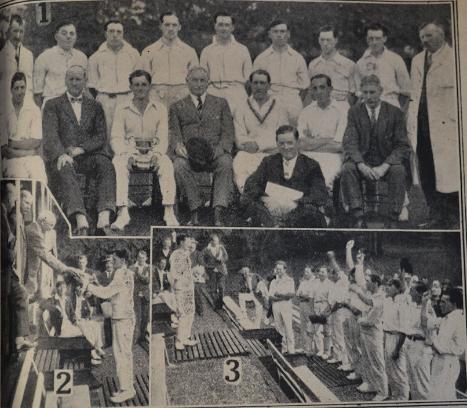
‘Legion trophy for Trumpington’, Cambridge Chronicle, 8 September 1926, p. 7. Cambridgeshire Collection.
Standing: Umpire Ballard, R. Rayner, H. Plummer, A.G. Haggis, S. Mayle, W. Osborne, C. Cousins, A. Godsalve, Umpire.
Seated: A. Wilson, Capt. Plumb (organising secretary), G. Smith (captain), R. Cousins, H. Pamplin, Mr Stimson (vice chairman County Committee). On ground: G. Rayner (scorer).
Leaving cricket on this 1920s high note and moving to football.
The earliest record of football in Cambridgeshire was noted in University records – dated 1579. It was of a match played at Chesterton between townspeople and University students. It was reported as an unruly game, which ended in a violent brawl (Cambridgeshire Football Association. Centenary. 1884-1984. One Hundred Years of County Football . Compiled by F.C. Barrett, Cambridgeshire Football Association, 1984, p.3). For football to be organised, rules were required. In 1848, a group of Cambridge University students agreed on a single set of rules by which to play football and the details were posted on trees surrounding Parker’s Piece. These 11 Cambridge Rules were almost entirely adopted by the Football Association when drafting the F. A. rules in 1863 and became the first rules for football in the modern era. The sculpture ‘Cambridge Rules 1848’, on which these 11 rules are reproduced, was commissioned and funded by Cambridge City Council and unveiled on Parker’s Piece in May 2018.

‘Cambridge Rules 1848’. Sculpture commissioned and funded by Cambridge City Council and unveiled on Parker’s Piece, Cambridge, in May 2018. Artists: Alan Ward and Neville Gabie. Photo: Wendy Roberts, 14 September 2019.
The earliest account of football played in Trumpington that I have found was dated 1904, see the history of local football .
In 1920, Trumpington had played in the Foxton League but in 1922 Trumpington Football Club entered the Cambs. League, Division 3. We have photographs of the Trumpington Football Club team in their 2nd season in Division 3, ‘Third Division Favourites’, 1923-1924 season, including a copy from the newspaper and a framed photograph from Colin Osborne, the grandson of F.W. Osborne. There are some familiar names and faces, including Cliff Smith, Gordon Smith, A.J. and A.G. Haggis, previously seen as cricket players. Unfortunately, having the photo taken may have been tempting fate, the team finished third in the League table.
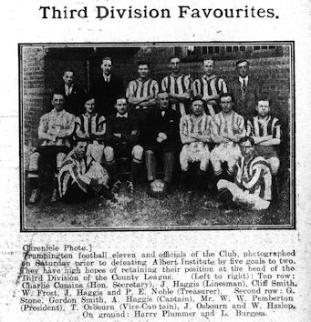
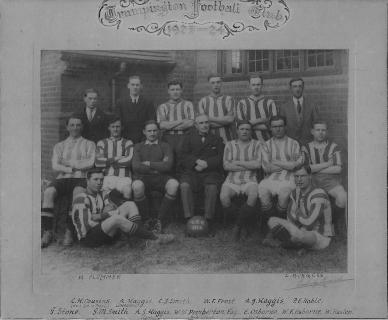
Trumpington Football Club, 1923-1924 Season. Left: Cambridge Chronicle, 26 March 1924, p.9; right: Colin Osborne, grandson of F.W. Osborne. With the title ‘ Third Division Favourites’ and the caption “Trumpington football eleven and officials of the Club, photographed on the Saturday prior to defeating Albert Institute by five goals to two. They have high hopes of retaining their position at the head of the Third Division of the County League. (Left to right): Top row: Charles Cousins (Hon. Secretary) [C. H. Cousins], J. Haggis (Linesman) [A. Haggis], Cliff Smith [C.J. Smith], W. Frost [W. F. Frost], J. Haggis [A.J. Haggis], and P.E. Noble (Treasurer). Second row: G. Stone, Gordon Smith [G.M. Smith], A. Haggis (Captain) [A.G. Haggis], Mr W.W. Pemberton (President), T. Osbourn (Vice-Captain) [E. Osborne known as Ted], J. Osbourn [F.W. Osborne known as Joe], and W. Haslop. On ground: Harry Plummer and L. Burgess.”
In their next season 1924-1925, Trumpington did succeed in finishing at the head of Division 3. In September 1924, Percy Robinson, Head Teacher at the village school, had introduced a school badge for pupils to wear. The Football Club Honorary Secretary had suggested that if the Club won its Division, perhaps it could adopt a larger version of that badge to be worn by players. The badge design was of Sir Roger de Trumpington’s arms with the two trumpets and crosses. Thus it was in December 1926, when Mr Percy Robinson presented Trumpington Football Club with a set of 15 Village Badges, to be worn on players’ jerseys. Bringing the story up to date, the current Trumpington Football Club wear on their kit a picture of the figure of Sir Roger de Trumpington on horseback.
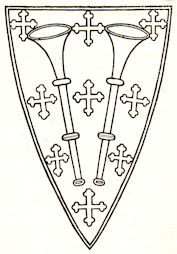
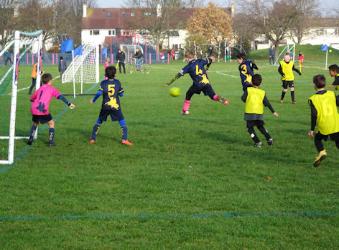
Left: The arms of Roger of Trumpington. Trumpington Magazine, March 1925.
Right: Trumpington Football Club matches on King George V playing field. Photo: Andrew Roberts, 17 November 2018.